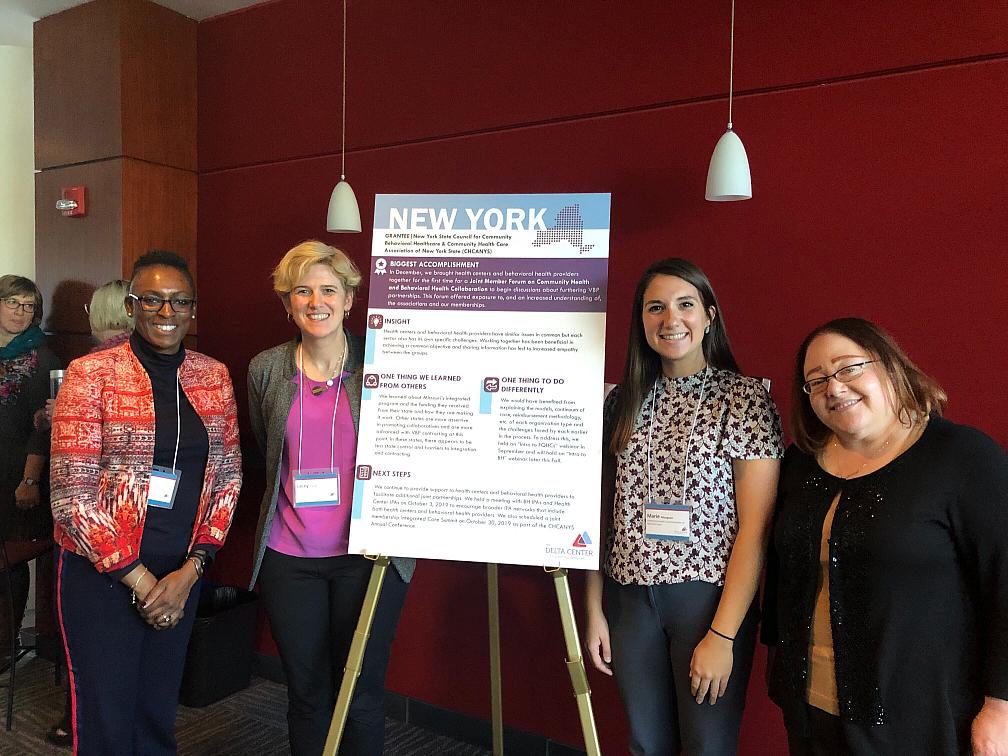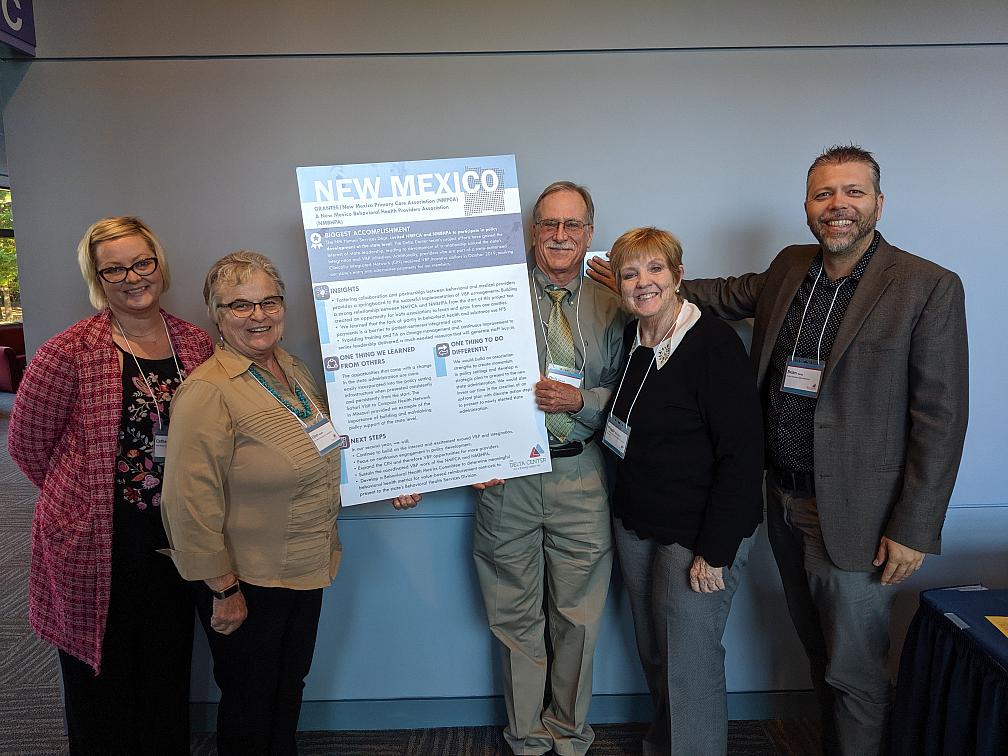

Integration is Not the Ultimate Goal
Three Takeaways from the Delta Center Convening #4
Advancing value-based payment and care is a long and complex process. Community health centers and community behavioral health organizations have internal structures that affect how care is delivered, how quality is measured, and how services are paid for. Further, they operate in a broader policy environment that shapes the opportunities and constraints for value-based payment and care. In the midst of the nitty gritty around care structures, data, contracts, and incentives, it can help to refocus on the ultimate goal for these efforts: better outcomes for patients and their families.
The Delta Center for a Thriving Safety Net convened grantees from 12 states at our fourth convening for state primary care associations and behavioral health state associations at the Robert Wood Johnson Foundation in Princeton, NJ, in October 2019. The first day began with keynote speeches on integrated care and finished with grantees sharing about successes and common challenges. On the second day, grantees shared about innovations in adopting value-based payment and care. Below are three takeaways from the convening.
1. Go where the grass is browner.
Keynote speaker Dr. Parinda Khatri shared how Cherokee Health Systems, a combined community mental health center and federally qualified health center based in Tennessee, has worked to integrate behavioral health and primary care over the past 20 years. As a mission-driven organization, Cherokee Health Systems has adopted a strategy that Dr. Khatri described as “Go where the grass is browner.” This has meant adding services where the need is greatest and keeping the end goal of better patient care at the forefront of decision-making. For example, Cherokee Health Systems built a telemedicine studio twenty years ago, as a way to ensure that patients in the most remote areas had access to psychiatric services. Cherokee Health Systems later received approval to run a telepharmacy pilot, further extending access.
Our patients showed us the way. We just paid attention to what they were telling and showing us about their needs.
Dr. Parinda Khatri
Cherokee Health System is widely known as a model for primary care and behavioral health integration. In reflecting on its inception, Dr. Khatri said that behavioral health integration was ultimately an idea that emerged from their patients. She further emphasized the view that integration is merely a means to an end to better serve Cherokee’s patients. She explained, “Integration is not the goal. Everyone is talking about integration, but do not get lost in the how. If the goal is to improve the health and wellbeing of a population, integration is just how we get there.”
2. Do what you do best; partner for the rest.
Comprehensive care extends far beyond physical and behavioral health. Using homelessness as an example, keynote speakers Rachel Solotaroff and Freda Ceaser described Central City Concern’s work providing direct access to housing and integrated healthcare services for homeless individuals in Portland, Oregon. Their presentation emphasized how healthcare exists within a broader context of structural drivers. Fully meeting patients’ needs requires a deep understanding of factors that influence the ability to thrive, along with a recognition of one’s role within the broader ecosystem.
The speakers shared an approach to inform integrated care strategies:
- Identify the problem you are trying to solve
- Take into account the structural factors that drive that problem.
- Scrutinize if and how you are addressing these structural drivers as you design and refine the integrated care models
- Ask yourself whether a traditional community health center or community mental health center is best equipped to address any drivers. If not, look for partners who are better equipped and identify ways to support their efforts.
With this approach, Solotaroff and Ceaser emphasized that the medical needs seen in healthcare are often the culmination of many non-health factors. They further called into question the term ‘social determinants of health.’ They encouraged putting healthcare in its appropriate context by using language that centers the experience and expertise of those outside of healthcare: “The term SDOH subordinates and medicalizes structural issues such as poverty, racism, and intergenerational trauma. As structural factors become more pronounced, then you need fewer and fewer of the individual factors to push someone over [into homelessness]. No amount of individual effort will help if those structural factors are trumping it.”
3. Data is king.
In the breakout sessions, grantee teams, Delta Center coaches, and speakers, discussed different payment topics, including: demonstrating ROI to stakeholders, reinvestment in the safety net, pulling together a persuasive data story to make the case for cost savings to payers, and any other topics that emerged.
Data is king. Whoever has the best data wins. We learned that the hard way…We got into health analytics because we knew we had to be better, and stronger, and more robust in it. Even though it’s not the fun and sexy part, it is absolutely essential. Know your data, get good data, don’t trust anyone else’s data.
Dr. Parinda Khatri
A recurrent theme was the importance of data. Data that is accurate, complete, and appropriate unlocks the power to understand, and thus manage, a wide range of activities, such as providing optimal care, defining and tracking quality metrics, and calculating the total cost of care for attributed populations. As the saying goes, “What gets measured gets done.” Echoing an earlier sentiment of “data is king,” grantees identified five common challenges to obtaining and effectively using data across multiple states:
- Accurate member attribution by Medicaid MCOs is a challenge in many states.
- Outdated and inaccurate member data from plans and state Medicaid overwriting provider-collected data is a barrier to maintaining accurate data on enrollees.
- The development of different attribution lists for different state programs creates confusion and complexity for providers.
- The time and multiple processes involved in provider credentialing is a barrier to access and an opportunity for streamlining within Medicaid managed care.
- Claims data is a cornerstone of many value-based payment contracts, yet providers have difficulty obtaining it.
Participants described acting as key partners to Medicaid and MCOs in identifying and systematically addressing common challenges. For example, associations highlighted the practice of setting up individual monthly meetings with each MCO to bring up and troubleshoot challenges together. Associations also reported that it was most effective to work toward solutions “on the ground,” to resolve as many issues as possible and then to elevate issues as needed to higher levels within the association, provider, plan, or Medicaid organizations.

